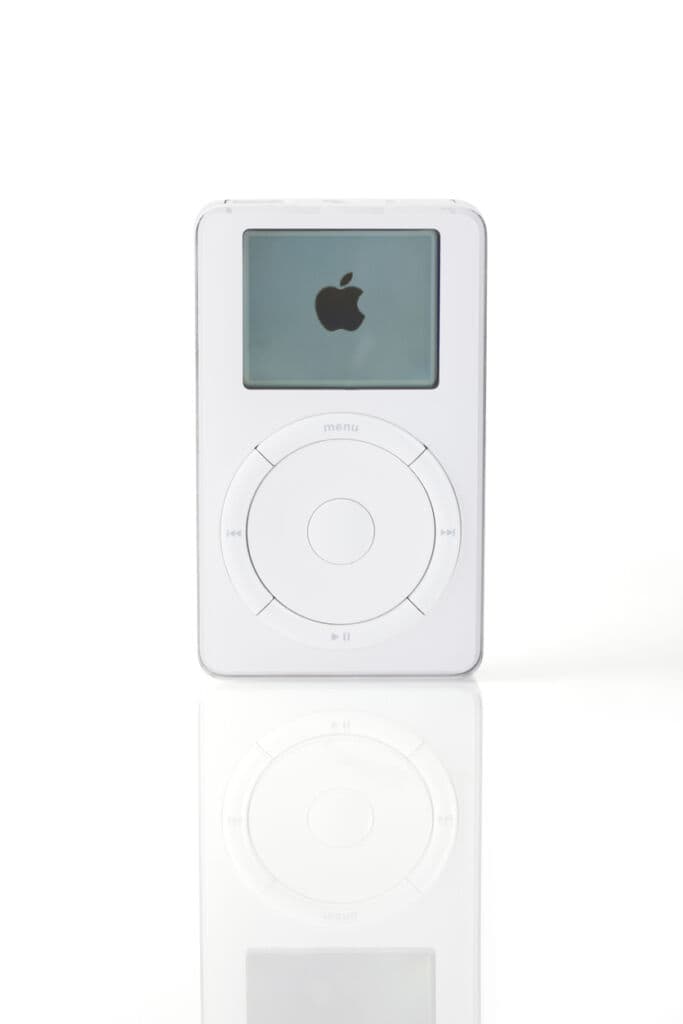Picture marketing as a weighing scale. On one side, you’ve got raw creativity – bold, daring ideas born from gut instinct. On the other, you have the solid appeal of evidence-based marketing, complete with reassuring statistics and customer feedback loops guiding your next move.
The more budget and time we have, the more likely we are to do the due diligence – the segmentation, the analysis, the attitudinal research and the creative assessment. But it’s easy to become hamstrung by the data – the more we know, the more we realise we don’t know, and the more likely we are to delay action.
Sometimes it’s better to trust our gut and get the campaign out there – but there’s always risk attached. Getting the balance right isn’t about choosing to be a stats geek or a creative genius – it’s about understanding how to harness both to hit the sweet spot.
“People don’t know what they want until you show it to them”
A famous quote from Steve Jobs. He wasn’t alone (or even original) in his thinking here. Henry Ford is reported to have said, “If I had asked people what they wanted, they would have said faster horses.”
The reality is that sometimes innovation has to pave its own way. And in many cases, it’s not just about selling a product, it’s about educating the market, or even creating a new market.
Research doesn’t always deliver the right answers
There’s no doubt that research is vital. Marketing is all about understanding people – their attitudes, their mindset. But to really understand the market, you’ve got to ask the right questions.
Anyone remember ‘New Coke’ back in 1985? In research, people seemed to prefer the taste of the new formula (it tasted more like Pepsi), but when it launched, the response was overwhelmingly negative. What Coca-Cola hadn’t accounted for was the attachment that people felt for the original Coke – it was about tradition, nostalgia and a sense of identity.
In short, they were asking the wrong question.
Then there was Google Glass – essentially a wearable computer in the form of eyeglasses. The technology, first announced in 2012, aimed to display information in a smartphone-like, hands-free format that could interact with the Internet via natural language voice commands.
Mind-blowingly advanced for its time – but for a whole host of reasons largely to do with data privacy, but partly due to the geekiness of the design, the product fell flat – and many establishments including bars, cinemas and theatres banned them completely.
Google may have researched the functionality and user experience, but failed to ask the questions that would reveal how people would feel about the implications of the technology.
Winning with Well-Researched Creativity
That’s not to say there’s no place for research – quite the opposite in fact. You’ve just got to make sure you’re asking the right questions.
Some creative triumphs owe their success to thorough research. Take Apple’s iPod, for instance. By understanding that users craved an easy, integrated experience, Apple designed the iPod and iTunes to work seamlessly together. This wasn’t just a product—it was a well-researched answer to a problem.
And then there’s the Old Spice “The Man Your Man Could Smell Like” campaign, launched in 2010, and considered one of the most successful rebranding campaigns in recent history.
Before this campaign, the brand was dated.
Old.
For those of us that remember, it was massive in the 70s and early 80s. Along with Brut.
But since then, it lost its way with the ‘younger generation’.
Not cool. Or phat. Or sic.
Proctor & Gamble wanted to change that by targeting a younger demographic and changing perceptions, specifically of millennial men and their partners – who were big influencers in the buying process.
Through extensive demographic research, focus groups, and market studies the company identified a gap in the market for appealing to younger men while simultaneously acknowledging the influence partners often have over men’s grooming products.
The campaign was an enormous success and a creative masterpiece.
So, ‘Yay’ to research.
Research is not a pre-requisite for success
But there are also plenty of good examples of hugely successful creative campaigns that (apparently) had very little input (if any) from conventional research.
Apple’s “1984” Super Bowl ad, for example, broke all the rules. Directed by Ridley Scott, the commercial aired during the Super Bowl XVIII on January 22, 1984. It depicted an Orwellian dystopian future, with Apple’s Macintosh heralded as the product to break the dominance of IBM (represented by ‘Big Brother’).
It was a huge risk – but there’s no public record that suggests any research was conducted before launch. Yet it created a huge buzz and helped to successfully position Apple as a unique, even revolutionary brand.
Nike’s “Just Do It” campaign was a similar leap of faith. Rather than harping on about shoe features or style, Nike tapped into something more universal—the human desire to push limits and overcome challenges.
Dan Wieden of advertising agency Wieden+Kennedy was reportedly inspired by the last words of convicted murderer Gary Gilmore, who apparently said “Let’s do it” before his execution. Whether that’s true or not doesn’t matter – the phrase captured the can-do attitude that Nike wanted to associate with its brand.
Again, there’s no public record of extensive market research preceding the launch. It was a bold move, but one that resonated at the time, and continues to do so. Since it launched in 1988, it has become one of the most recognisable advertising slogans in history.
Striking the right balance
It’s 100% worth noting that while Nike and Apple may have smashed it out of the park without research (as we understand it), both companies almost certainly already had a deep understanding of their brand, product, and target audience, which would have informed these daring moves.
Creativity is never about blind luck.
So, as marketers, how do we decide when to lean on research and when to let our creative instincts take the wheel?
The tug of war between data and creativity doesn’t have to be a battle – they’re not mutually exclusive. Magic happens where creativity meets understanding, where innovation aligns with insight, and where gut instinct is enhanced by evidence.
The key lies in striking the right balance – considering the nature of your project, your audience, and the potential risks. There are no hard and fast rules, but if you need it, here’s a bit of guidance:
Use research when you’re dipping your toes into a different market, launching a new product, or trying to reach a different audience. Here, a better understanding of the audience’s reactions can be invaluable.
Trust your instinct when you already have solid experience with your product and audience, or you’re making minor tweaks rather than big changes.
But then there’s a big grey area.
When you have an idea that’s so different, so new… do you research the hell out of it or ‘just do it’?




